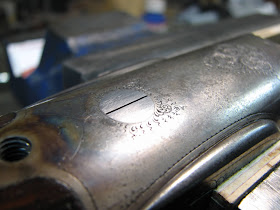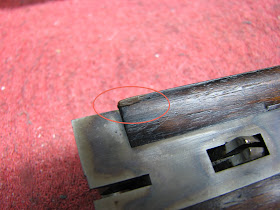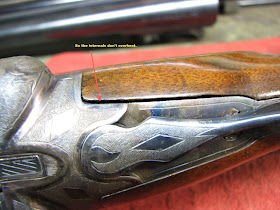Here's one that anybody in this business has heard countless times from the American doublegun crowd whenever anything about their chosen brand of gun is called into question:
"Well, they must have made them pretty good for them to still be around a hundred years later."
There are minor variations but that's the basic idea of it. I'd even agree with it if all of those Smiths, Ithacas and whatever else, had actually stood up to 100 (or more) years of actual use while remaining in good serviceable condition. The trouble is that when a little logic is applied, the above cliche doesn't hold up. It is almost a guarantee that when one encounters an American double from the "classic era" that is in high original condition, it very likely spent most of those years between its manufacture and today, sitting in a safe, closet or gun cabinet. These tend to be higher grade guns, purchased out of want, rather than need.
Lower, "field" grade guns at the time were more likely purchased because of a real need, such as to put meat on the table. These guns obviously did see regular use and often a lot of it. The results of this use can be seen in any example of this type of gun encountered today. Many of these guns exhibit every malady known to doubles, things like failed stocks, loose actions, broken springs, etcetera.
But even these guns were not in constant use during the decades between then and now. Consider the following: Among the "better off" sportsmen, the repeating and semi-auto guns almost totally supplanted the double, even before world war two. After the war, a double probably couldn't be given away. Indeed, most makers either quit making them or went under entirely. Even those individuals who depended upon a gun to literally be able to eat, eventually passed on, and many of their heirs would be in a better position than the preceding generation, so they wouldn't need a gun to feed their family. Then, there were the "expert" gunwriters of the day, who made it their personal crusade to convince shooters that all damascus-barreled doubles were looked upon as ticking time bombs that were best hung on the wall, or even thrown into a lake (literally).
So, realistically, how many years of continual use did most of these guns really see? A decade or possibly two, before being retired to the closet? Was that decade or two of use trouble-free? Probably not. Based upon the number of these guns I've worked on that exhibit "period" repairs, I'm betting on probably not.
A gun's age and its actual "mileage" rarely correlate.
To quote Carl Sagan: It is far better to grasp the universe as it really is than to persist in delusion, however satisfying and reassuring.



































































